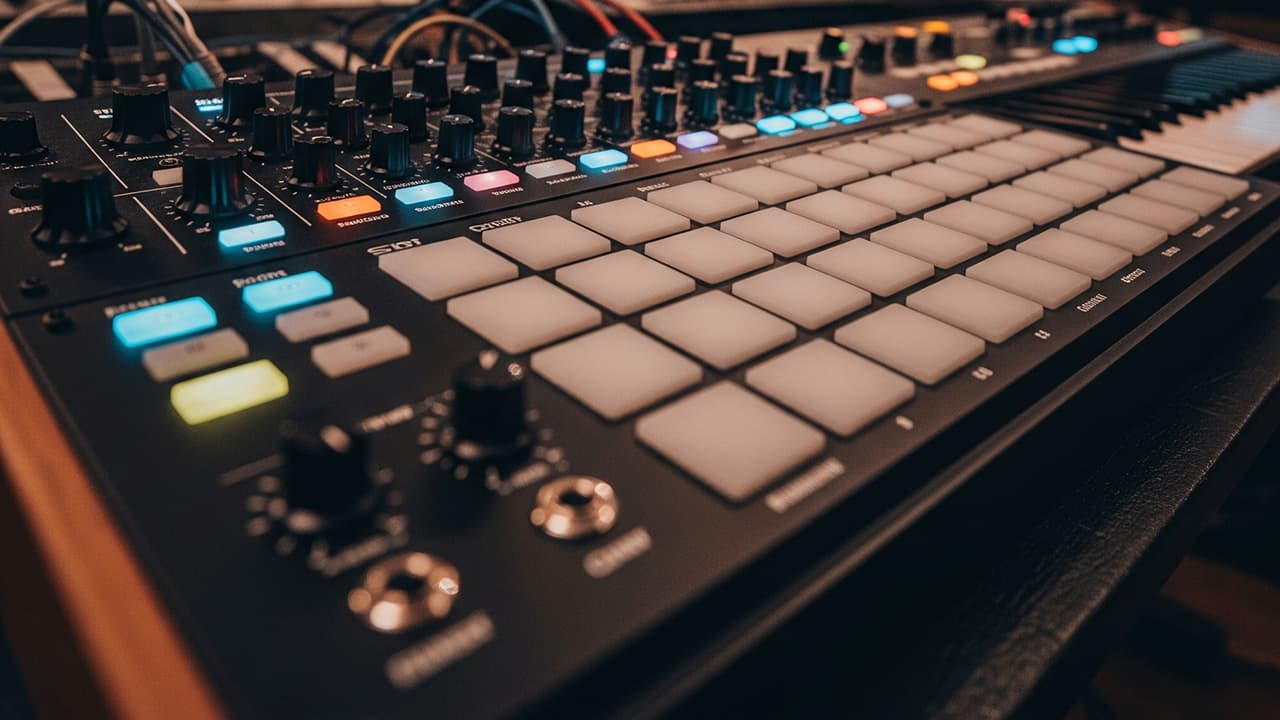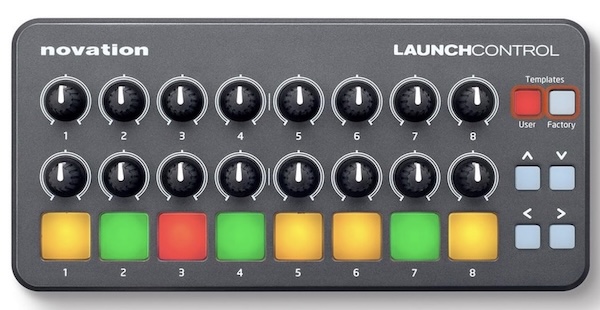What is a MIDI controller and how to use it in your music ?

July 16 2025
In the world of modern music production, MIDI controllers have become essential tools both in the studio and on stage.
But what exactly are they, and how can they help you?
🎛️ What is a MIDI Controller?
A MIDI controller is a device that does not generate sound on its own, but instead sends MIDI signals to another device (such as a computer, synthesizer, or DAW) to control virtual instruments, effects, and more.
The word MIDI comes from "Musical Instrument Digital Interface", a protocol created in the 1980s that allows communication between electronic musical instruments.
📆 When Were They Invented?
The MIDI protocol was developed in 1983 by engineers from Roland and Sequential Circuits. This breakthrough allowed different brands to make their instruments "speak the same language."
Since then, MIDI controllers have evolved from simple keyboards to complex devices with pads, faders, knobs, and screens.
🎚️ What is a MIDI Controller Used For?
A MIDI controller allows you to:
- Play virtual instruments like pianos, synthesizers, or electronic drums.
- Control parameters like volume, filters, effects, and automation.
- Trigger loops, samples, or clips in DAWs like Ableton Live.
- Mix tracks, produce beats, or control lights and visuals live.
🧩 Types of MIDI Controllers
There are various types depending on design and functionality:
1. MIDI Keyboards
The most common type. They range from 25 to 88 keys. Some include velocity sensitivity and aftertouch.
2. Pad Controllers
Ideal for beat making. They use touch-sensitive pads. Example: Akai MPD, Ableton Push.
3. Control Surface Controllers
These include faders, knobs, and buttons to control mixing, effects, and automation. Example: Novation Launch Control.

4. Hybrid Controllers
Combine keys, pads, knobs, and sliders in one device. Example: Akai MPK Mini, Arturia KeyLab.
5. DJ-Specific Controllers
Designed for mixing music and launching loops/samples in real-time. Example: Native Instruments Traktor Kontrol.
🎶 How Do They Help in Music Production?
- Provide a more intuitive and creative workflow.
- Let you quickly improvise ideas.
- Allow you to control instruments and effects as if they were physical gear.
- Reduce mouse usage, which streamlines mixing and composing.
🔴 How Do They Benefit You Live?
- Let you manipulate sounds in real-time.
- Trigger loops, effects, or backing tracks with precision.
- Enhance your performance by physically interacting with your music.
- Some even sync lights or visuals for more impactful shows.
🏷️ Popular Brands and Models
- Akai: MPK Mini, MPD218
- Arturia: MiniLab, KeyLab
- Novation: Launchkey, Launchpad
- Native Instruments: Komplete Kontrol, Maschine
- M-Audio: Oxygen, Keystation
- Ableton: Push 2
- Alesis: V-Series, Q-Series
🟢 Which MIDI Controller Should You Start With?
If you're just starting out, I recommend one of these:
- Akai MPK Mini Mk3: compact, with pads, keys, and knobs.
- Arturia MiniLab 3: great build quality and bundled software.
- Novation Launchkey 25: ideal if you use Ableton Live.
All of these models are affordable, easy to use, and offer plenty of features to get you started without hassle.
✅ Conclusion
MIDI controllers are the physical extension of your musical creativity. Whether you’re producing at home or performing live, there’s a controller out there for you. Choose based on your needs and budget, and start creating!